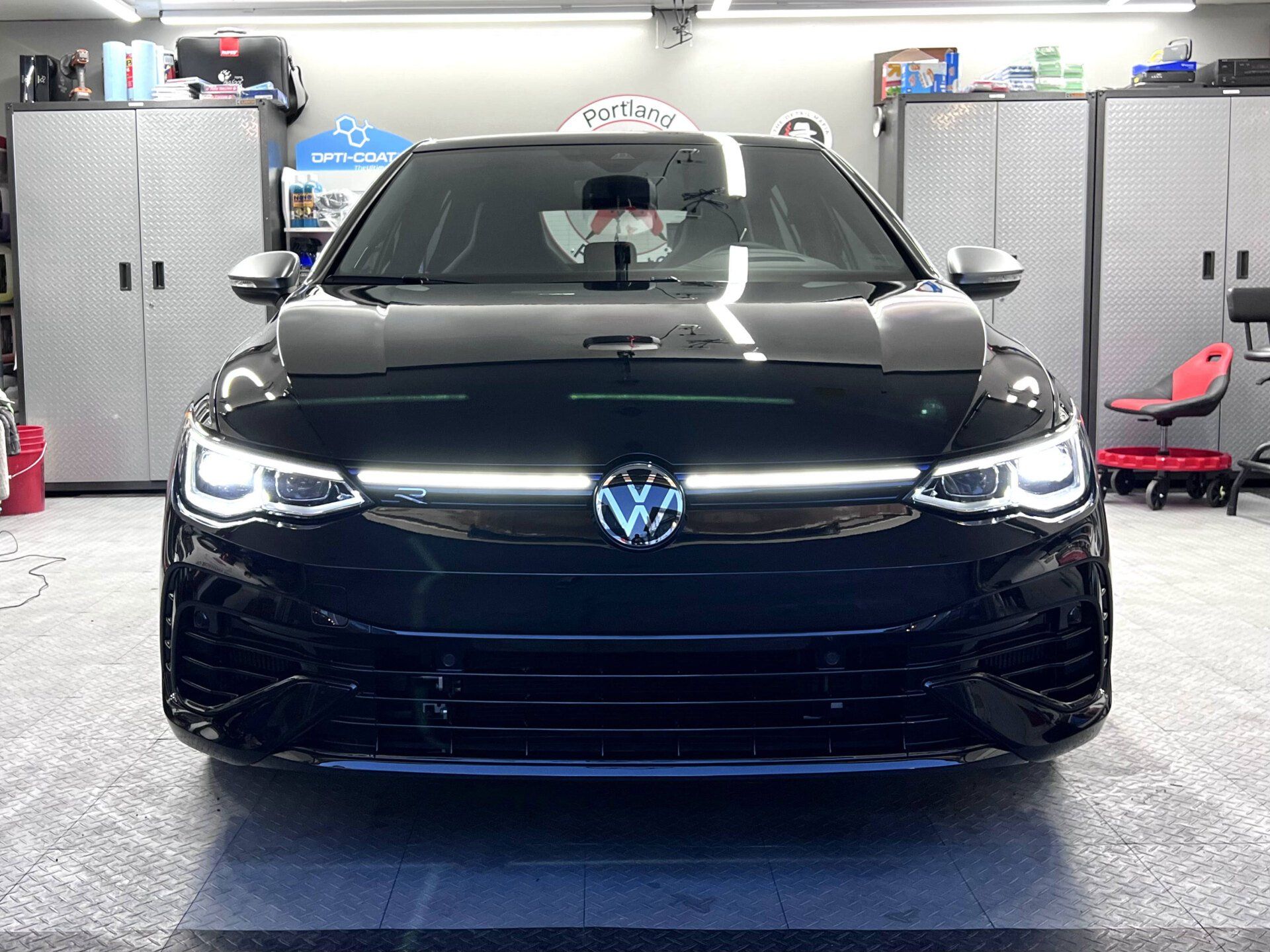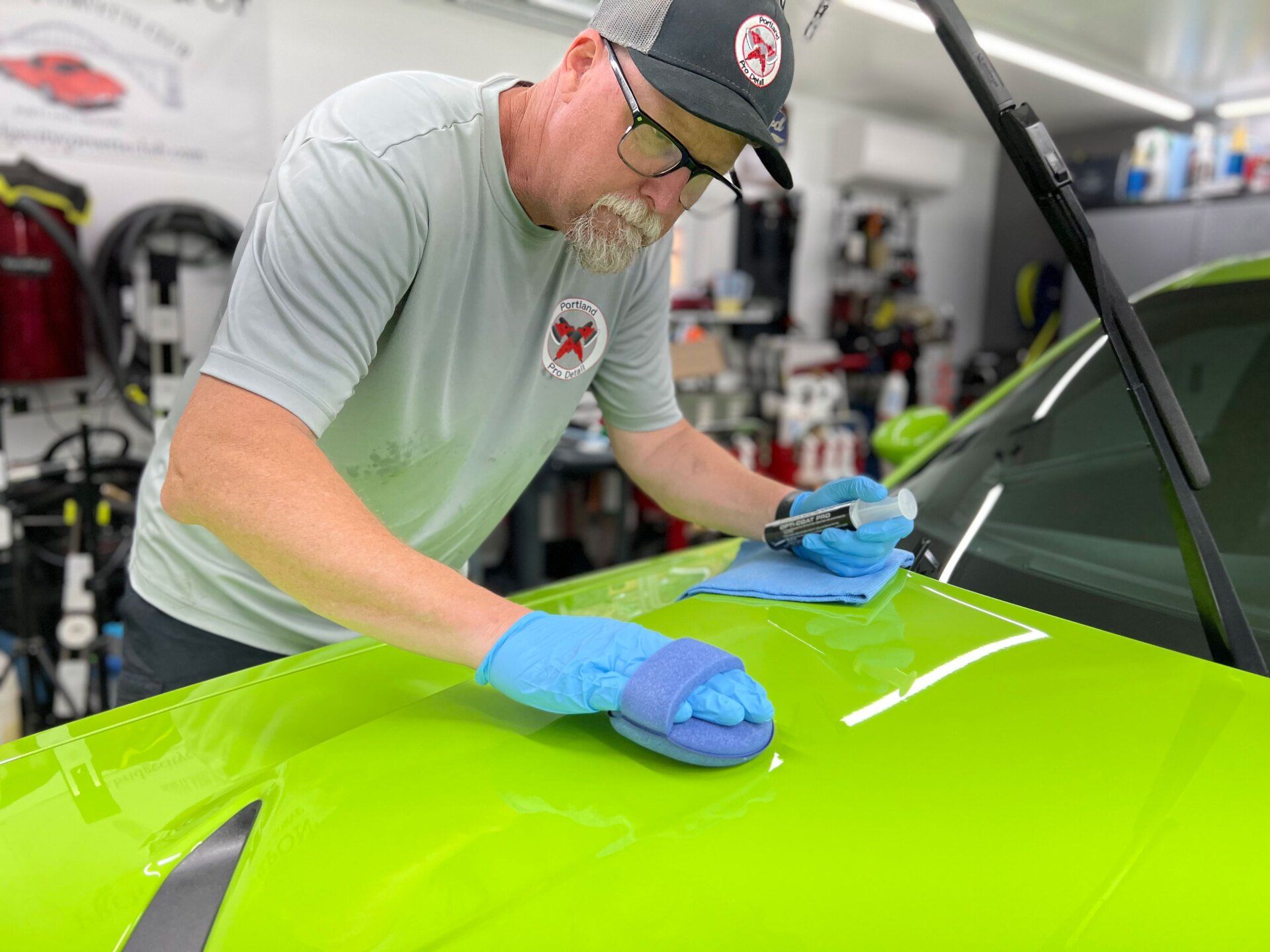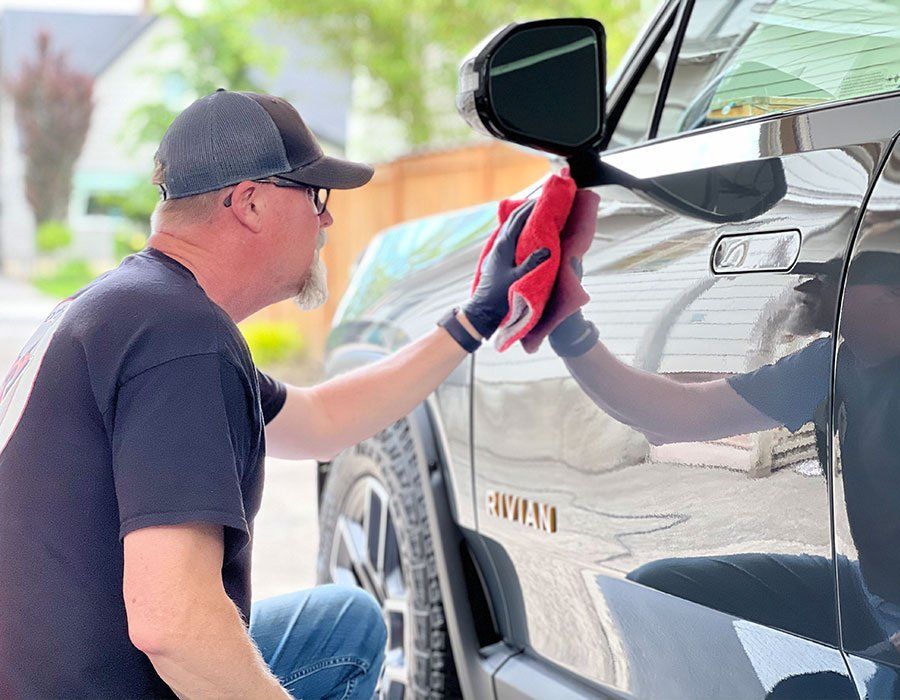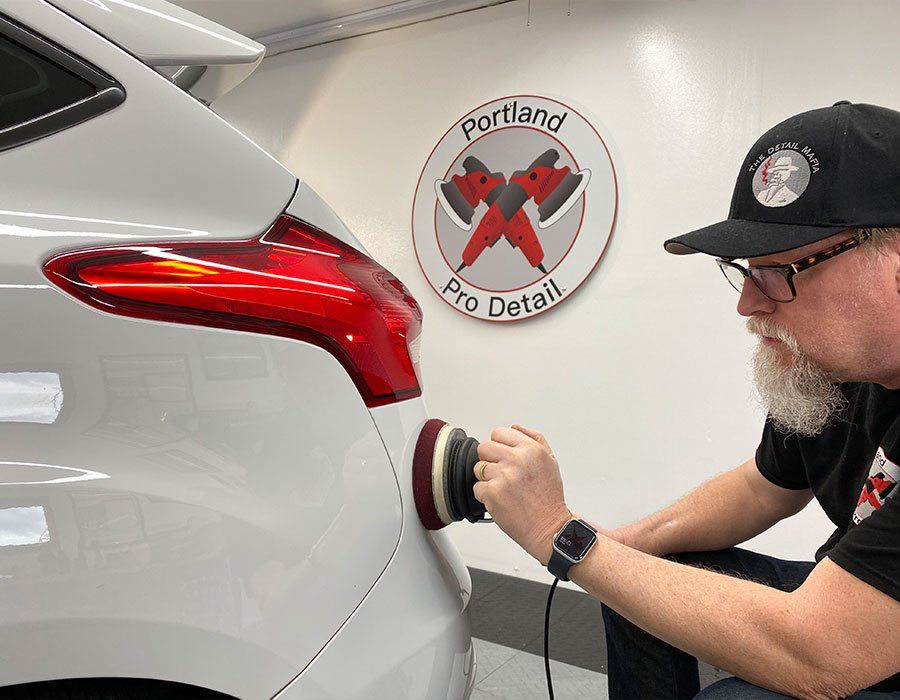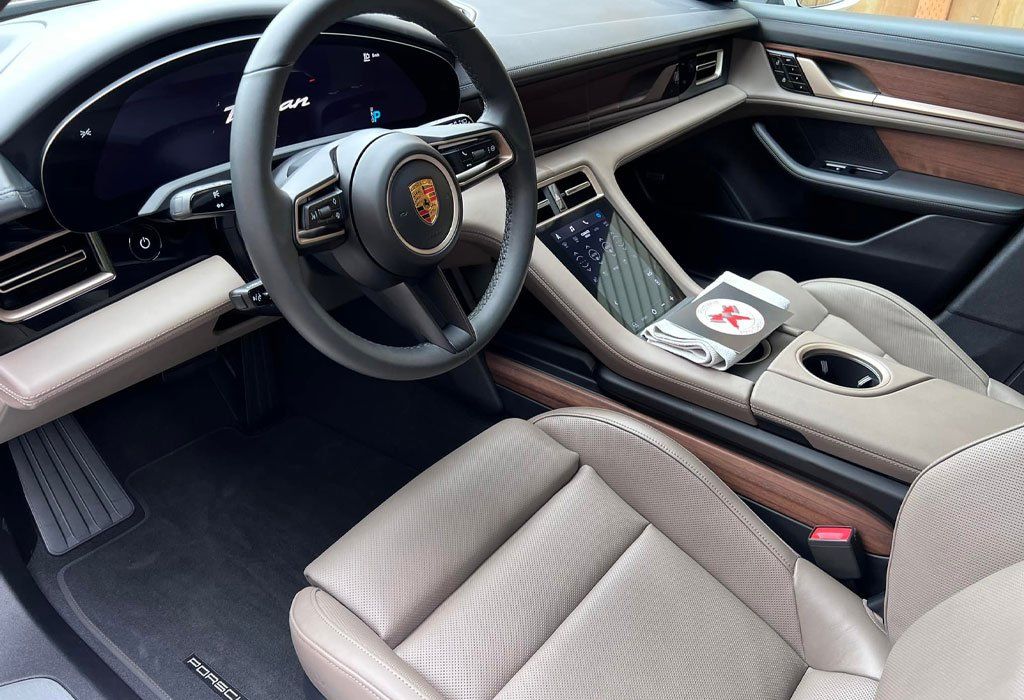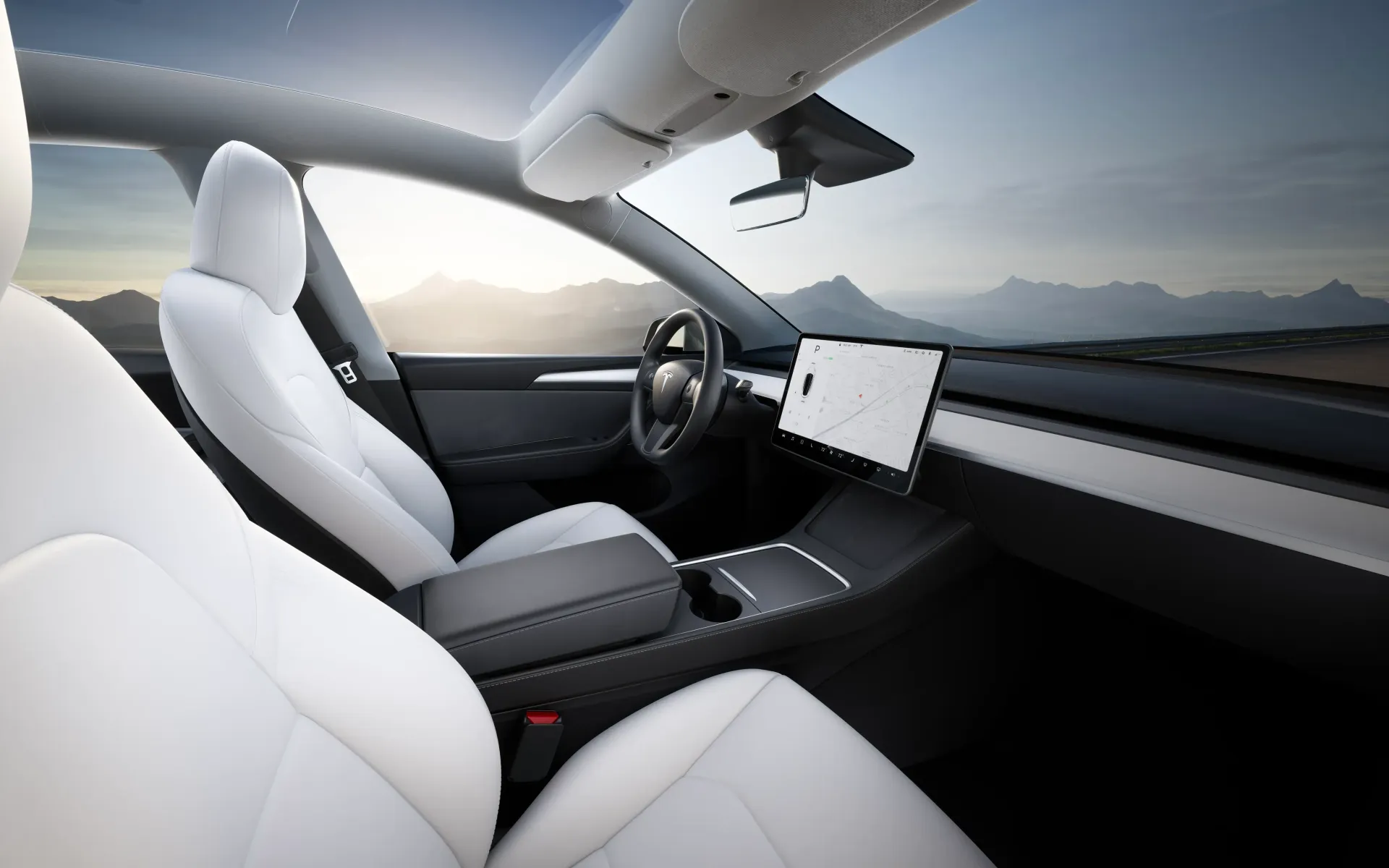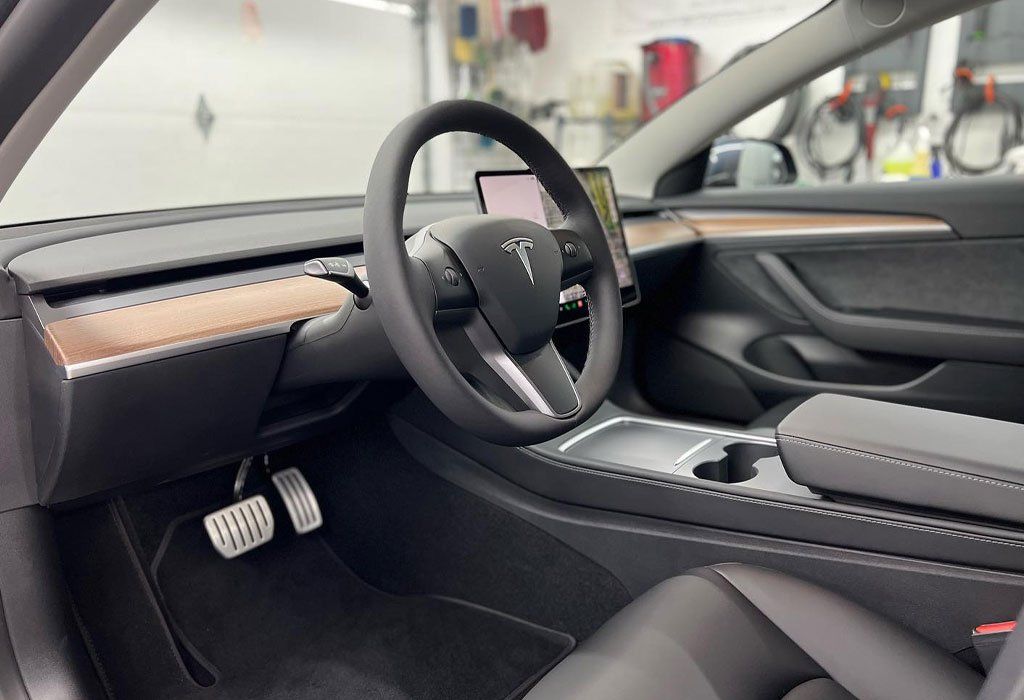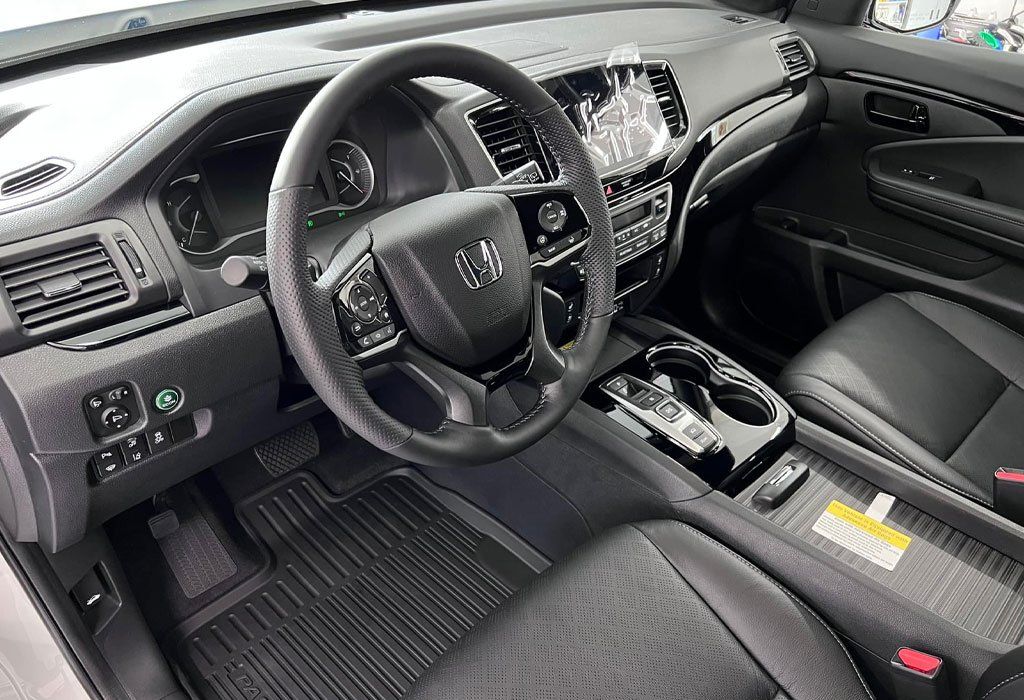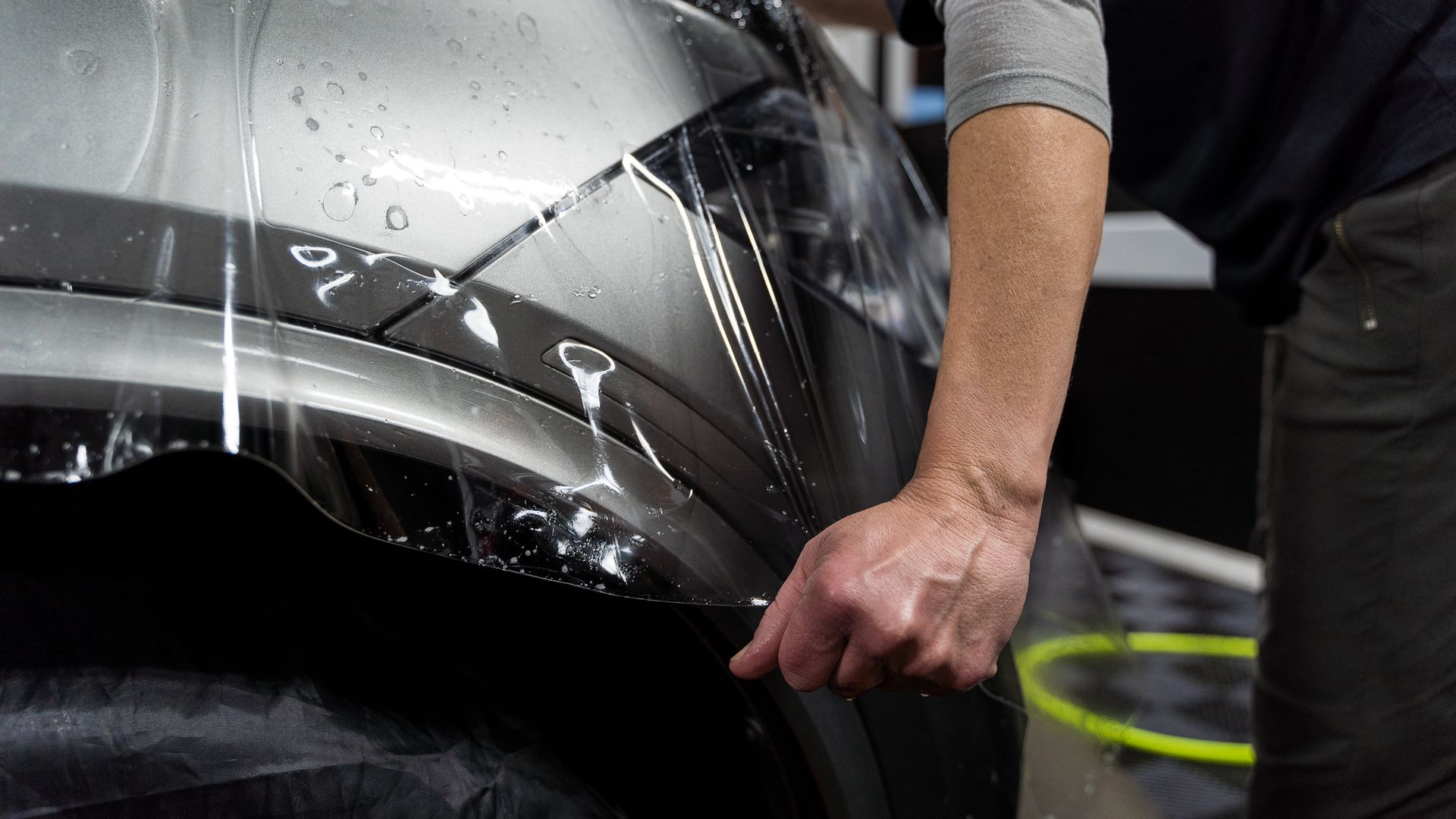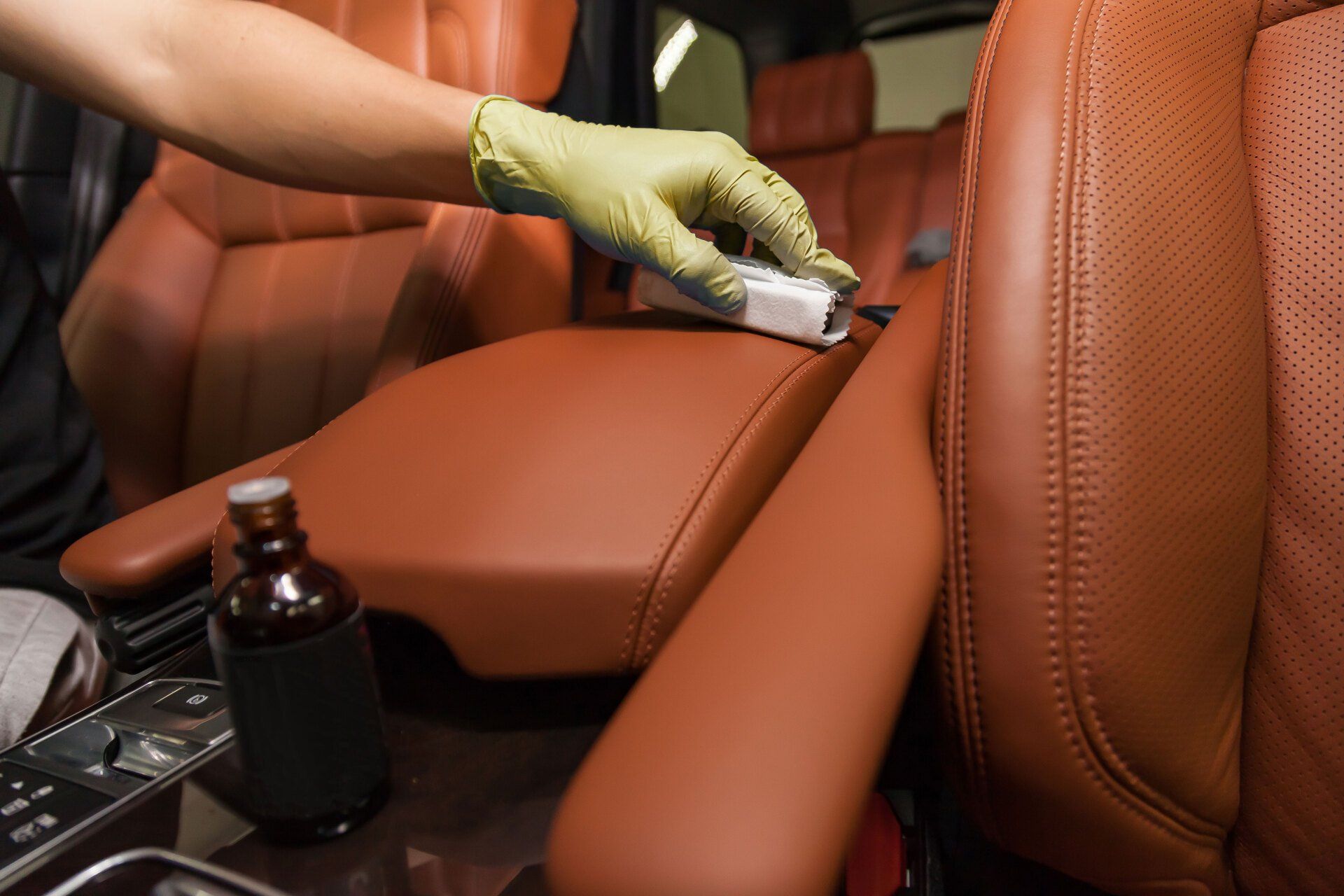How to Maintain Your Vehicle's Interior Ceramic Coating: A Comprehensive Guide
CALL (503) 444-7415
Maintaining the sleek look of your vehicle's interior ceramic coating can be challenging, especially with everyday use threatening to dull its shine. Whether it's accidental spills or the daily accumulation of dust and grime, preserving that pristine appearance requires more than a casual wipe-down. The good news? With the right approach, you can ensure your ceramic-coated surfaces remain spotless and protected for years.
To maintain your vehicle's interior ceramic coating, start by using a pH-neutral cleaner and gentle microfiber cloths for regular cleaning. Avoid abrasive cleaners or harsh chemicals that could damage the coating. Additionally, periodically apply a ceramic coating booster to enhance and prolong the protective qualities of the interior coating.
Effective Cleaning Methods
When it comes to maintaining the gleaming finish of your vehicle's interior ceramic coating, understanding the right cleaning methods is crucial. Gentle wiping using a clean, damp microfiber cloth is key to preventing scratches on the ceramic coating. Remember, even though ceramic coatings are highly durable, they are not indestructible. By using gentle motions during the wiping process, you can effectively remove dust and grime without compromising the integrity of the ceramic coating. Think of it as giving your car a gentle hug to maintain its glossy sheen.
For quick spot cleaning, a diluted pH-neutral cleaner comes to the rescue. This is especially useful for tackling small spills or spots that may appear on your vehicle's interior surfaces. Instead of spraying the cleaner directly onto the surface, which can lead to uneven application and potential damage if left sitting for too long, opt to spray it onto a microfiber cloth. This approach gives you better control over the quantity applied and ensures an even distribution across the surface. When choosing a pH-neutral cleaner, make sure it is specifically designed for use on surfaces with ceramic coatings.
Dusting might seem like a mundane chore, but when it comes to maintaining your ceramic-coated vehicle interiors, it plays a crucial role in preserving their integrity and shine. Regularly dusting with a dry microfiber cloth helps prevent abrasive particles from settling on the coated surface. Think of dusting as a preventative measure, akin to wiping shoes before entering a home to keep grit and dirt outside. It’s best to establish a regular schedule for dusting to stave off any buildup of particles that could potentially mar your ceramic coating’s lustrous finish. Incorporating this practice into your routine maintenance not only enhances the aesthetic appeal of your vehicle's interior but also safeguards the ceramic coating from gradual wear caused by dust-related abrasion.
By integrating these effective cleaning methods into your regular maintenance routine, you can actively contribute to preserving the longevity and luster of your vehicle's interior ceramic coating.
Using Microfiber Cloths
When it comes to maintaining the shine and luster of your vehicle's interior ceramic coating, one indispensable tool in your arsenal is the microfiber cloth. These specially designed cloths are engineered to gently clean surfaces without scratching, making them ideal for delicate ceramic coatings. Let's explore why these cloths are crucial and how to use them effectively in your car care routine.
- Choosing the Right Cloth: To ensure that you're not inadvertently causing damage while cleaning, it's imperative to select the right kind of microfiber cloth. Look for ones with a fine weave and consider those rated at least 300 GSM (grams per square meter) for superior absorbency and softness. The finer weave helps prevent scratching or marring the delicate ceramic coating, ensuring that each wipe maintains the pristine condition of your vehicle's interior surfaces. In comparison to standard cleaning cloths, the ultra-fine fibers of microfiber cloths work wonders at trapping and removing dust, dirt, and other particles from surfaces. This not only ensures a thorough clean but also reduces the risk of leaving behind damaging particles that might compromise the integrity of the ceramic coating. When shopping for microfiber cloths, always opt for quality over quantity.
- Proper Washing: When it's time to wash your microfiber cloths, treat them with care and respect. Wash them separately in mild detergent without fabric softeners or bleach—these additives can compromise their performance and effectiveness. After washing, air-drying or tumble drying on low heat is recommended to preserve their softness and cleaning effectiveness for prolonged use. Remember, just as we take care of our vehicles to maintain their longevity, we must also extend the same level of care to our cleaning tools. By nurturing these simple yet essential items, we're maximizing their utility and effectiveness in upholding the beauty of our car's interior.
- Color-Coding: An ingenious way to maintain cleanliness and avoid cross-contamination involves color-coding your microfiber cloths. By assigning different colors for various parts of the car—such as one color dedicated to cleaning the dashboard, another for seats, and so forth—you can prevent transferring dirt or residues from one area to another. This approach not only optimizes cleanliness but also contributes to a more systematic and organized cleaning process.
Choosing the right microfiber cloth and giving it proper care isn't just about maintenance; it's about optimizing its functionality and protecting your vehicle's interior ceramic coating. With these tips in mind, you'll be able to ensure a flawless touch every time you set out to maintain your car's pristine appearance.
Waterless Wash Techniques
When it comes to effectively cleaning your ceramic-coated car, you might wonder about waterless wash techniques. These techniques are gentle on the coating and make it easy to keep your vehicle looking fabulous without a full wash every time. Let's break down how to use these techniques properly to maintain the integrity and appearance of your ceramic coating.
Product Selection
The first step to effective waterless washing is choosing the right product. Look for a waterless wash product that's specifically formulated for ceramic coatings. These products are designed to be cleaned without stripping the coating layer, ensuring that your ceramic coating remains intact and well-protected. To start with, give the waterless wash solution a good shake before use. This ensures that all the active ingredients are well mixed and ready to work their magic on your vehicle's surface. Next, generously spray the solution onto one section at a time for thorough coverage but not excessive oversaturation, which may lead to streaking or residue buildup. Then, using a clean and soft microfiber cloth, wipe gently in straight, overlapping lines to lift away dirt and grime without causing any abrasion to the ceramic coating. Once the cloth becomes saturated or starts picking up substantial dirt, flip it to a clean side or use a new one to prevent any dirt collected on the cloth from being reapplied onto the surface.
Frequency
Waterless wash techniques are incredibly convenient for quick cleanups or in-between regular washes, helping your car stay pristine without constant exposure to wet washing processes. It's important to remember that using waterless wash methods isn't a substitute for regular wet washing but rather an efficient way to maintain the cleanliness and shine of your vehicle between full washes. It's akin to giving your car a quick shower instead of a deep bath; they refresh and rejuvenate without requiring as much water or time. By incorporating waterless wash techniques into your maintenance routine, you not only preserve the gleaming appearance of your ceramic-coated vehicle but also save time while keeping your car looking fantastic between thorough washes.
Compatible Cleaning Products
Choosing the right cleaning products for your vehicle's interior ceramic coating can be a game-changer. The wrong products could undo all the benefits of the coating, leading to damage and reduced protection. To avoid this, let's dive into what you need to know about choosing the right cleaning products to ensure your ceramic coating stays intact and effective.
- pH-Neutral Cleaners: When it comes to pH-neutral cleaners, they are specifically formulated to clean without causing any chemical reactions that can erode or damage your ceramic coating. This is crucial because using the wrong cleaner can cause etching or dullness on the coated surface. Reputable brands are highly recommended due to their balanced pH levels, which are safe for ceramic coatings.
- Avoid Harsh Chemicals: Harsh chemicals containing acids, alkalis, or bleach should be avoided at all costs when cleaning a car with a ceramic coating. These aggressive substances can break down the protective layer of the coating, leaving your car vulnerable to environmental hazards and reducing its longevity. It's like using a sledgehammer to crack a nut - unnecessary and potentially damaging. The last thing you want is to ruin the protective prowess of your ceramic coating by using a product that's too abrasive; it's counterproductive since ceramic coatings are designed to shield your vehicle from just that.
- Read Labels: Always take the time to carefully read product labels before using them. Look out for warnings against using the product on coated surfaces. If in doubt, perform a spot test on an inconspicuous area first. This simple step could save you from potential disasters and is much easier than having to deal with unintended consequences later on. It's important to recognize that even though some products claim to be safe for ceramic coatings, you still need to exercise caution, as not all claims are foolproof. A spot test is an effective way to assure compatibility with your specific coating.
Being mindful of the cleaning products you use is an integral part of maintaining and prolonging the effectiveness of your ceramic coating. By opting for pH-balanced cleaners, steering clear of harsh chemicals, and performing spot tests when uncertain, you're taking proactive steps to safeguard the protective qualities of your ceramic coating.
Routine Care Tips
Taking care of your vehicle's interior ceramic coating is all about consistency. It's like looking after a small garden - regular attention keeps everything fresh and healthy.
- Wipe Down Regularly: Incorporate a quick wipe-down of the interior surfaces into your weekly routine to remove dust and minor smudges before they accumulate. This can be as simple as using a soft microfiber cloth to gently wipe down the surfaces, ensuring that no dust or debris is left behind. By doing this regularly, you prevent any buildup that could potentially damage the ceramic coating over time.
- Check for Dirt Buildup: It's important to keep an eye out for dirt buildup in frequently-traveled areas like door handles and armrests. These high-contact surfaces are more prone to collecting dirt, oils, and grime. By inspecting these areas frequently, you can target them for more thorough cleaning and maintenance, helping to preserve the integrity of the ceramic coating.
- Ventilate the Interior: Proper ventilation plays a crucial role in maintaining the interior ceramic coating of your vehicle. When parked, keeping the windows slightly open can reduce humidity inside the car, effectively preventing mold or mildew from forming. This is especially important in humid climates, where moisture can pose a threat to the longevity of the ceramic layer.
By consistently implementing these routine care tips, you can ensure that your vehicle's interior ceramic coating remains in optimal condition for longer periods of time. Remember, proactive maintenance is key to preserving the appearance and functionality of your vehicle's interior surfaces. Employing these strategies on a consistent basis will undoubtedly set the stage for long-term durability.
Long-Term Maintenance Strategies
After establishing a good routine for maintaining your car's ceramic coating, it's important to think about the long-term. This involves comprehensive strategies to ensure the durability and effectiveness of the coating over time. Let's dive into some key approaches to long-term maintenance.
Annual Inspections
With regular care, it can be easy to assume that everything is working perfectly. However, scheduling annual inspections for your vehicle's ceramic-coated surfaces is vital. These inspections enable you or a professional detailer to catch any imperfections or wear and tear early on, before they escalate into larger issues. This step is crucial because small imperfections can easily go unnoticed in day-to-day cleaning routines. Early detection allows for prompt touch-ups or reapplications where necessary, ultimately saving time and money by addressing problems before they become more severe.
Ceramic Boosters
In addition to regular cleaning and maintenance, consider applying a ceramic coating booster every 6-12 months. These boosters help rejuvenate the initial coating layer, ensuring that it retains its hydrophobic and protective qualities. Think of these boosters as a type of 'vitamin' for your car's ceramic coating—a little extra something that keeps it healthy and strong. Just like how vitamins enhance our well-being, ceramic boosters maintain the vitality of your car's protective coating.
Professional Maintenance
While regular DIY upkeep is essential, there may come a time when professional maintenance services are necessary. If you start noticing a decline in the coating's performance despite attentive care, consider seeking professional detailing services for a thorough cleaning and potential reapplication of the ceramic coating. Imagine this as taking your vehicle for a check-up at the doctor's office. Sometimes, only a professional can diagnose and address underlying issues that aren't evident through regular observation.
Remember to consult with reputable detailing professionals who specialize in ceramic coating application and maintenance. They can provide tailored advice based on the specific type of ceramic coating used on your vehicle's interior. These long-term maintenance strategies form a comprehensive approach to caring for your vehicle's interior ceramic coating. By combining routine care with yearly inspections, booster applications, and professional assistance when needed, you're maximizing the benefits of this protective treatment. Creating this holistic approach ensures that your vehicle’s interior maintains its pristine appearance and functionality for years to come. Implementing these long-term maintenance strategies will contribute significantly to preserving and maximizing the longevity of your vehicle's interior ceramic coating. With proper care and attention, you can ensure that your car maintains its elegant appearance and protective qualities over an extended period of time.
Top-Notch Interior Ceramic Coating Service in Beaverton, OR
Protect your vehicle's interior with Portland Pro Detail's
finest interior ceramic coating service in Beaverton, OR. Our high-quality interior ceramic coating provides an exceptional shield against the elements, enhancing your interior's durability and shine. Trust our experienced team to deliver a flawless application that preserves your interior's pristine appearance. Book your appointment today to enjoy unparalleled protection and a stunning finish for your car. Call us today at
(503) 444-7415 to get started!
Portland Pro Detail Blog
